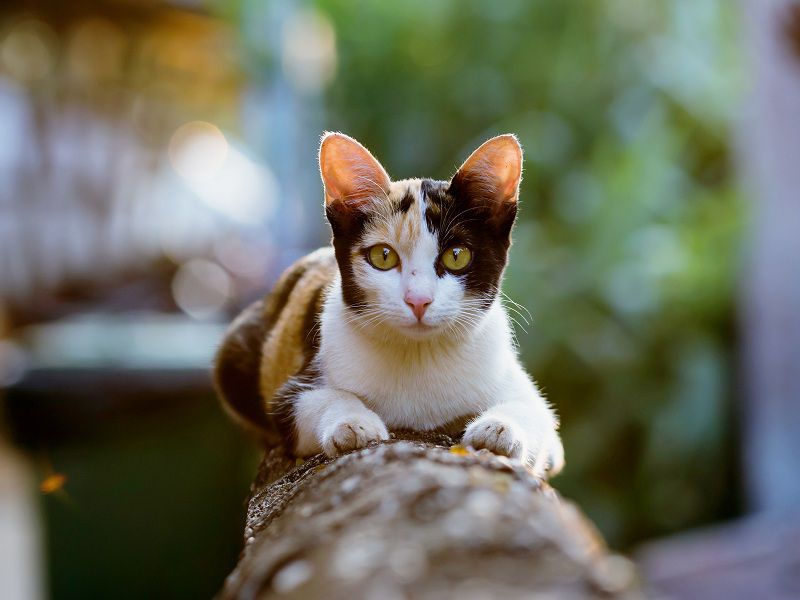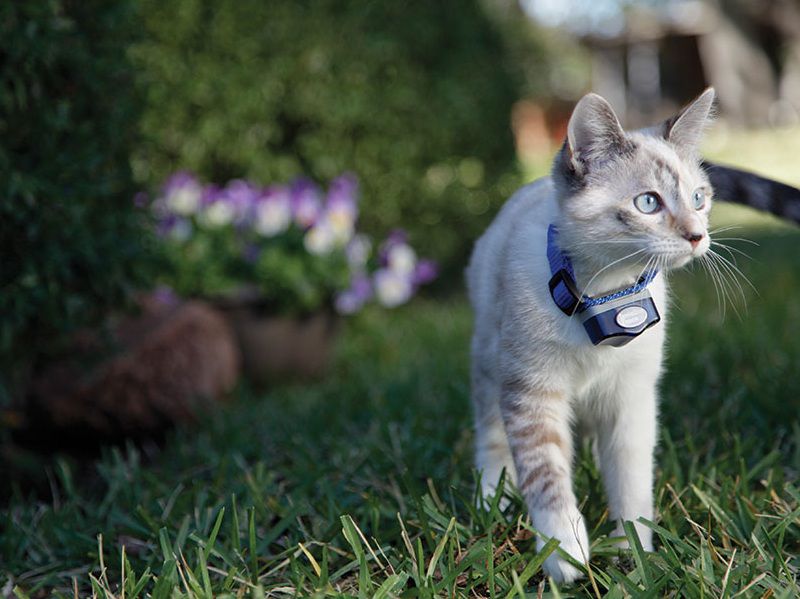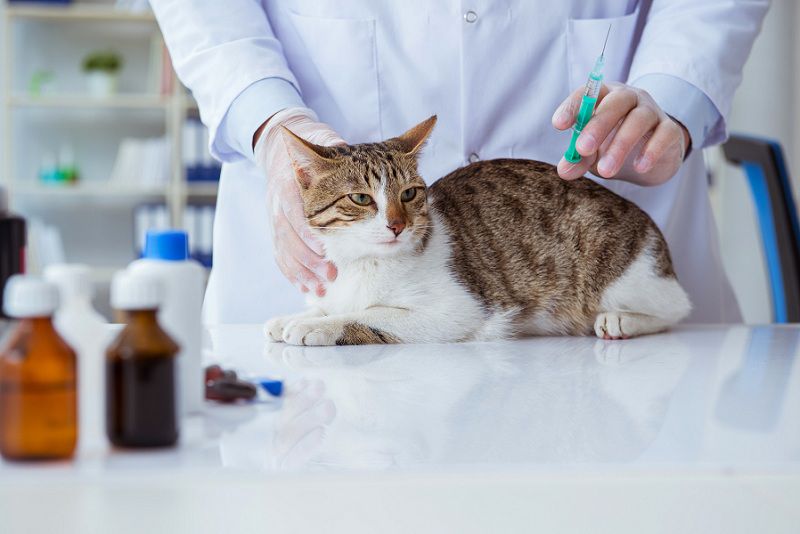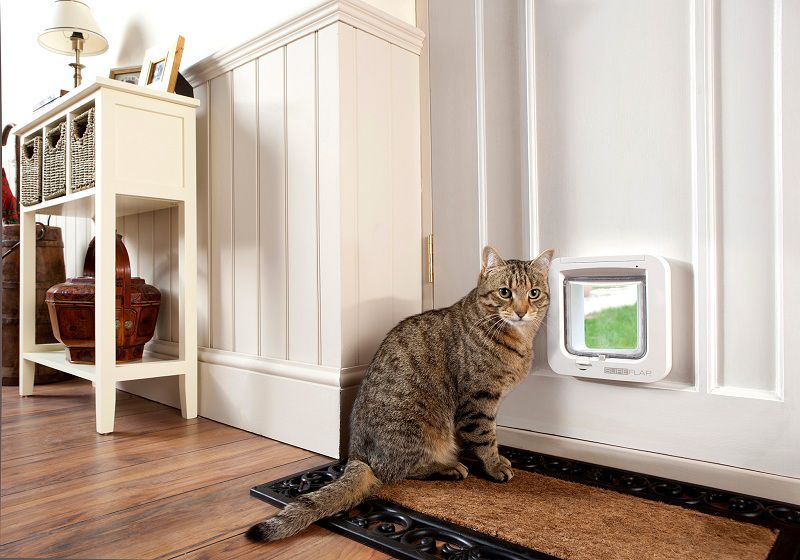Deciding whether or not to let your cat spend time outside is a big step for many cat owners. The indoor vs outdoor cat issue is widely debated as there are several dangers that outdoor cats face and safety is often a big concern.
Wanting to let your cat outside to explore, play and enjoy everything nature has to offer is completely understandable and most cats love spending time outside. Fortunately, there are many ways you can help keep your outdoor cat safe such as microchipping, vaccinating, using a cat tracker and bringing them in at night.
As we know how stressful it can be to let your cat outside, below are 8 ways you can make sure your cat is safe while still enjoying the fresh air.

Be Sure to Microchip Your Cat
A microchip will help to ensure you cat finds their way back to you if they are ever lost or injured. Even if your cat wears a collar with an ID tag, we all know how easily collars can come off during a cat’s adventures so it’s a good idea to have your cat microchipped as an extra precaution.
The microchip is a permanent form of identification and will make sure it is easy for your cat to be reunited with you. If your cat has a microchip, always make sure you keep your contact information on the chip up to date.
Use a Cat Tracker
One of the key concerns for cat owners that let their cats roam is not knowing where they are, particularly when they are later than usual coming back home after a day of exploring. A cat tracking device is the best solution to this as it offers a high-tech way of knowing exactly where your cat is at all times.
Good cat trackers can even show you where they have previously been. Having a cat tracker gives you peace of mind as well as a glimpse into the outdoor life of your cat. There are lots of fantastic tracker options available and many of them offer additional features such as virtual fencing (you receive a notification if your cat leaves a set perimeter), activity statistics and location maps.

Use a Quick Release Reflective Collar
A quick release reflective collar with an ID tag is a low-cost way to show people that your cat has a home and is very helpful if your cat ever gets lost. If the collar is reflective it will make your cat more visible to vehicles in low-light situations, giving drivers more time to respond if your cat is on the road.
The collar must be quick release because if it gets snagged somewhere it need to release and come off your cat for their safety and survival.
Spend Time Outside with A Harness and Lead
If your cat tolerates wearing a harness, walking them on a lead is a wonderful, safe and controlled way for you both to enjoy the outdoors. A walk around the block can allow your cat to explore without risking you losing them or them becoming injured from traffic or predators.
This can be a great stepping-stone to them becoming an outside cat or it can be the perfect solution if you’re not sure about letting them roam alone.
Ensure All Vaccinations Are Up to Date
A trip to the vet is essential before letting your cat outside as this will ensure your cat is up to date on all of the necessary vaccinations.
Remember that outdoor cats will be at risk of a number of diseases so vaccines are an important consideration. In addition to this, make sure your cat is regularly treated with flea, tick and worming medication.

Limit Your Cats Roaming Distance with Fencing
Fencing off your garden or patio is a way of safely allowing your cat time outside while still knowing exactly where they are and ensuring they are in a safe environment.
This can be a particularly effective solution if you live in an area near busy roads but you still want to give your cat the freedom to spend time outdoors. Putting toys and enrichment in the fenced area will help keep them busy and encourage their natural behaviours when outside.
Consider Neutering
Cats that are not neutered are more likely to roam further afield which increases the number of roads and other potential dangers they will come across.
They may also be more territorial and aggressive so can get into fights with neighboring cats. By neutering your cat, you can lessen the likelihood of these issues.
When Possible Bring Your Cat Inside at Night
Nighttime is a particularly hazardous time for outdoor cat’s due to predators and cars. Your cat can be dazzled and disorientated by a cars headlight at night which increases the risk of them being hit.
Bringing your cat indoors at night will help avoid these dangers and reduce your worry.
Install a Cat Flap
A cat flap that allows your cat access as and when they need it is a good idea. You can get smart cat flaps that only open at set times or only let certain cats inside.
Giving your cat access to a safe and secure place is important so always make sure they have shelter or a way to get back inside the house.

5 Top Tips To Try Out:
- When you first let your cat outside, keep them in the garden so they can get used to being outside. They can also lay their scent around which will help them find their way back home when they adventure further afield later on.
- Use feeding time to your advantage. The first few times you let your cat out, do so before meal time so they will be more likely to come inside when you call them back in.
- It is also a good idea to bring your cat in for food during the busiest period of the day (rush hours) or in the late afternoon before nightfall to help keep them safe.
- Train your cat to come to you when you call or shake the cat food box.
- When letting your cat outside, make sure there are no toxins in your garden such as pesticides, rubbish from bins, poisons and anti-freeze.
> You May Also Like:
- Are flea collars safe for cats and humans? The safest flea collar for cats
- Best Cat Scratching Post to File Nails Reviews
- What Is the Difference Between Clumping and Non-Clumping Cat Litter?
